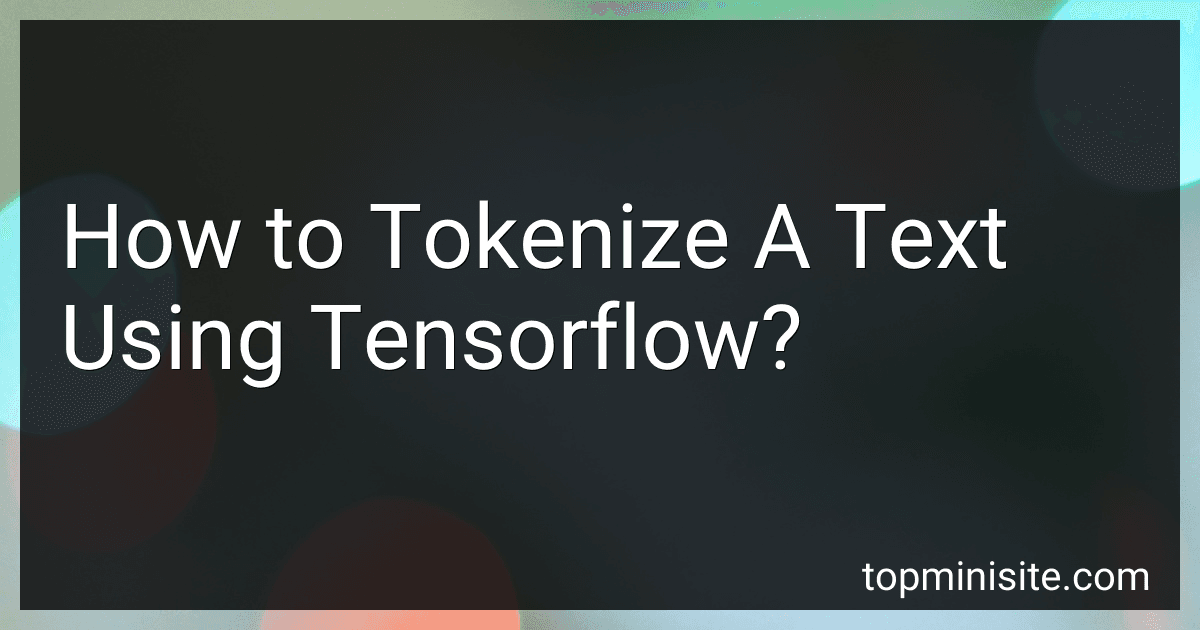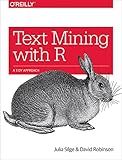Best Tools for Text Tokenization to Buy in December 2025
Tokenization is the process of breaking down a piece of text into smaller units, such as words or characters. In TensorFlow, the Tokenizer API can be used to tokenize a text by converting it into a sequence of tokens. This can be useful for tasks such as natural language processing or text classification. To tokenize a text using TensorFlow, you can use the Tokenizer class provided in the tensorflow.keras.preprocessing.text module. Simply create an instance of the Tokenizer class and use the fit_on_texts() method to tokenize the text. This method will create a word index that maps each unique word in the text to an integer token. You can then use the texts_to_sequences() method to convert the text into a sequence of tokens based on the word index.
What is the tokenization strategy for sequence-to-sequence models?
The tokenization strategy for sequence-to-sequence models involves breaking down the input and output sequences into tokens, which are the smallest units of text that the model can work with. This helps the model understand the structure and meaning of the text and generate accurate predictions.
Some common tokenization strategies for sequence-to-sequence models include:
- Word-level tokenization: This strategy involves breaking down the text sequences into individual words or subwords. Each word or subword is considered a token, and the model processes them one at a time.
- Character-level tokenization: In this strategy, the text sequences are broken down into individual characters. Each character is treated as a token, and the model processes them sequentially to generate predictions.
- Byte-pair encoding (BPE): BPE is a tokenization strategy that combines characters into subword units to create a more efficient representation of the text. The model learns the subword units during training, improving its ability to generate accurate predictions.
- Sentencepiece tokenization: Sentencepiece is a tokenization strategy that dynamically splits text into subword units based on the frequency of character sequences. This helps the model handle rare and out-of-vocabulary words more effectively.
Overall, the tokenization strategy for sequence-to-sequence models should be chosen based on the specific characteristics of the text data and the requirements of the model. It is important to experiment with different tokenization strategies to find the most effective approach for a particular task.
How to create a custom tokenizer in TensorFlow?
To create a custom tokenizer in TensorFlow, you can follow these steps:
- Define a custom tokenizer class that inherits from the Tokenizer class in TensorFlow. You can create this class with your custom logic for tokenizing text.
import tensorflow as tf
class CustomTokenizer(tf.Module): def __init__(self, vocab=None): self.tokenizer = tf.strings.UnicodeScriptTokenizer() self.vocab = vocab # optional custom vocabulary
def tokenize(self, text):
tokens = self.tokenizer.tokenize(text)
# custom tokenization logic here
return tokens
def detokenize(self, tokens):
# custom detokenization logic here
return tf.strings.reduce\_join(tokens, separator='')
- Implement custom tokenization and detokenization logic inside the tokenize and detokenize methods of the custom tokenizer class.
- Optionally, you can provide a custom vocabulary to the tokenizer by passing it as an argument to the __init__ method.
- Instantiate an object of the custom tokenizer class and use the tokenize and detokenize methods to tokenize and detokenize text.
custom_tokenizer = CustomTokenizer() text = "Hello world!" tokens = custom_tokenizer.tokenize(text) detokenized_text = custom_tokenizer.detokenize(tokens)
print(tokens) print(detokenized_text)
By following these steps, you can create a custom tokenizer in TensorFlow with your own tokenization logic.
How to convert text into tokens using TensorFlow tokenizer?
To convert text into tokens using TensorFlow tokenizer, you can follow these steps:
- Import the necessary libraries:
import tensorflow as tf from tensorflow.keras.preprocessing.text import Tokenizer
- Create an instance of the Tokenizer class:
tokenizer = Tokenizer()
- Fit the tokenizer on the text data:
texts = ['sample text 1', 'sample text 2', 'sample text 3'] tokenizer.fit_on_texts(texts)
- Convert the text into tokens using the tokenizer:
sequences = tokenizer.texts_to_sequences(texts)
- Optionally, you can specify the maximum vocabulary size or set other parameters when creating the Tokenizer instance, such as:
tokenizer = Tokenizer(num_words=1000) # set maximum vocabulary size to 1000
- You can also convert the tokens back into text using the reverse method:
tokenizer.sequences_to_texts(sequences)
By following these steps, you can easily convert text into tokens using TensorFlow tokenizer.
How to tokenize text in a language-independent manner?
One way to tokenize text in a language-independent manner is to use open-source tokenization libraries such as NLTK (Natural Language Toolkit) or spaCy, which have tokenizers designed to work across different languages. These libraries use various techniques such as rule-based tokenization and machine learning models to split text into individual tokens.
Another approach is to use regular expressions to define rules for splitting text into tokens based on common patterns in languages, such as spaces, punctuation marks, numbers, and special characters. Regular expressions can be customized for different languages to handle specific tokenization rules and exceptions.
It is also important to consider language-specific tokenization challenges, such as word boundary detection in languages without clear spaces between words (e.g. Chinese or Thai), and handle them accordingly in the tokenization process.
Overall, using a combination of tokenization libraries, regular expressions, and language-specific considerations can help tokenize text in a language-independent manner.



